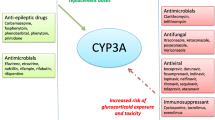Abstract
Although its exact mechanism is unclear, anaemia is well recognised as a feature of hypopituitarism; and anaemia is associated with Sheehan’s syndrome (SS). We aimed to evaluate the frequency and severity of anaemia and other haematological changes among patients with Sheehan’s syndrome, in comparison with healthy controls. Sixty-five SS patients and 55 age-matched female healthy controls were included. Biochemical and hormonal assessments and haematological evaluations were carried out, and groups were compared. The mean number of red blood cells, as well as mean haemoglobin, iron and erythropoietin levels, total iron-binding capacity and transferrin saturation were all significantly lower in SS patients compared to controls. SS patients had significantly higher rates of anaemia (80.0% vs. 25.5%, p = 0.0001), iron deficiency (44.6% vs. 5.4%, p = 0.001), leukopenia (20.0% vs. 5.4%, p = 0.015), thrombocytopenia (9.2% vs. 0.0%, p = 0.028) and bicytopenia (21.5% vs. 1.8%, p = 0.001) compared to controls. Anaemic SS patients had normochromic-normocytic anaemia (55%) or hypochromic-microcytic anaemia (45%). Anaemia is frequently associated with Sheehan’s syndrome and responds to appropriate replacement therapy. Hypopituitarism should be considered as a possible cause of anaemia, and a hormone examination should be undertaken promptly, particularly in patients with anaemia resistant to therapy and/or with a history suggestive of Sheehan’s syndrome.
Similar content being viewed by others
References
Sheehan HL (1937) Postpartum necrosis of the anterior pituitary. J Pathol Bacteriol 45:189–214 doi:10.1002/path.1700450118
Dash RJ, Gupta V, Suri S (1993) Sheehan’s syndrome: clinical profile, pituitary hormone responses and computed sellar tomography. Aust N Z J Med 23:26–31
Ozbey N, Inanc S, Aral F, Azezli A, Orhan Y, Sencer E et al (1994) Clinical and laboratory evaluation of 40 patients with Sheehan’s syndrome. Isr J Med Sci 30:826–829
Ferrari E, Ascari E, Bossolo PA, Barosi G (1976) Sheehans syndrome with complete bone marrow aplasia: long-term results of substitution therapy with hormones. Br J Haematol 33:575–582 doi:10.1111/j.1365-2141.1976.tb03576.x
Erslev AJ (2001) Anemia of endocrine disorders. In: Ernest B, Marshall AL, Barry SC, Thomas JK (eds) Williams Hematology, 6th edn. McGraw-Hill, New York, pp 407–412
Lindeman RD, Trygstad O, Halvorsen S (1969) Pituitary control of erythropoiesis. Scand J Haematol 6:77
Kelestimur F (2003) Sheehan’s syndrome. Pituitary 6:181–188 doi:10.1023/B:PITU.0000023425.20854.8e
Huang YY, Ting MK, Hsu BR, Tsai JS (2000) Demonstration of reserved anterior pituitary function among patients with amenorrhea after postpartum hemorrhagea. Gynecol Endocrinol 14:99–104
Escamilla R, Lasser H (1948) Simmonds’ disease. J Clin Endocrinol 2:65
Grieg H, Metz J, Sunn L (1956) Anemia in hypopituitarisim. Treatment with testosterone and cortisone. S Afr J Lab Clin Med 2:52
Meinke HA, Crafts RC (1964) Effect of combined thyroxine–cortisone–growth hormone therapy on hematopoiesis in hypophysectomized rats. Proc Soc Exp Biol Med 96:74
Van Dyke DC, Garcia JF, Simpson ME et al (1952) Maintenance of circulating red cell volume in rats after removal of the posterior and intermediate lobes of the pituitary. Blood 7:1005
Ozkan Y, Çolak R (2005) Clinical and laboratory evaluation of 20 Sheehan syndrome cases. Neuroendocrinol Lett 26:257–260
Sert M, Tetiker T, Kırım S, Kocak M (2003) Clinical report of 28 patients with Sheehan’s syndrome. Endocr J 50:297–301 doi:10.1507/endocrj.50.297
Dokmetas HS, Kilicli F, Korkmaz S, Yonem O (2006) Characteristic features of 20 patients with Sheehan’s syndrome. Gynecol Endocrinol 22:279–283 doi:10.1080/09513590600630504
Degrossi O, Houssay A, Varela J, Capalbo E (1961) Erythrokynetic studies in the anemia of thyroid and pituitary insufficiency. In: Pitt-Rivers R (ed) Advances in thyroid research. Pergamon, New York, p 410
Rudzki Z, Matynia A, Przybylik-Mazurek E et al (2003) Hypopituitarism and hematological abnormalities mimicking myelodysplastic syndrome, report of four cases. Pol Arch Med Wewn 110:1003–1011
Kim DY, Kim JH, Park YJ, Jung KH, Chung HS, Shin S et al (2004) Case of complete recovery of pancytopenia after treatment of hypopituitarisim. Ann Hematol 83:309–312 doi:10.1007/s00277-003-0800-4
Sarina S, Laura S (2001) Sheehan’s syndrome: a rare complication of postpartum hemorrhage. J Am Board Fam Pract 14:389–391
Sohmiya M, Kato Y (2001) Effect of long-term administration of recombinant human growth hormone (rhGH) on plasma erythropoietin (EPO) and haemoglobin levels in anaemic patients with adult GH deficiency. Clin Endocrinol (Oxf) 55:749–754 doi:10.1046/j.1365-2265.2001.01417.x
Nishioka H, Haraoka J (2005) Hypopituitarism and anemia: effect of replacement therapy with hydrocortisone and/or levothyroxine. J Endocrinol Invest 28:528–533
Nomiyama J, Shinohara K, Inoue H (1994) Improvement of anemia by recombinant erythropoietin in a patient with postoperative hypopituitarism. Am J Hematol 47:249–250 doi:10.1002/ajh.2830470326
Author information
Authors and Affiliations
Corresponding author
Rights and permissions
About this article
Cite this article
Gokalp, D., Tuzcu, A., Bahceci, M. et al. Sheehan’s syndrome as a rare cause of anaemia secondary to hypopituitarism. Ann Hematol 88, 405–410 (2009). https://doi.org/10.1007/s00277-008-0607-4
Received:
Accepted:
Published:
Issue Date:
DOI: https://doi.org/10.1007/s00277-008-0607-4




